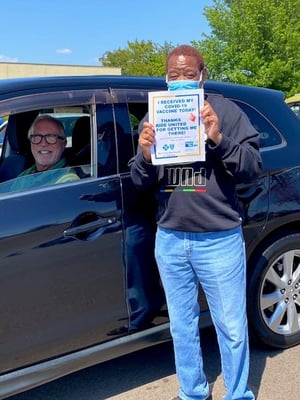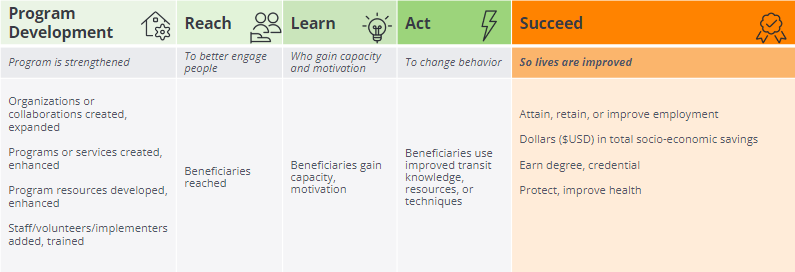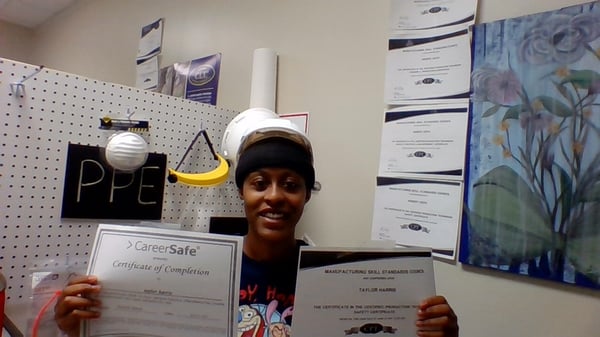Case Study
How Demonstrating Impact Takes Nonprofits to New Heights
How the United Way of Madison County (UWMC) Used Impact Data to Accelerate a Promising Initiative
As the old quandary goes: If a tree falls in the forest and there’s no one around to hear it, does it make a sound? Same could be said about nonprofit programs. If a nonprofit program exists, but it doesn't know and communicate its impact, did it really make a difference after all? We would argue: maybe.
In the nonprofit world, communication plays a vital role in advancing a program’s mission, reporting to stakeholders, soliciting donations, and–ultimately–helping more individuals improve their lives. Without robust data, it can be challenging to convince stakeholders that a program is making real change.
Enter: the United Way of Madison County (UWMC).

In 2020, the organization launched a rideshare program to get local residents back on their feet and into the workplace called Ride United. While the program showed initial promise, it reached new levels of impact when it started incorporating outcomes data into reporting and communications. With the help of True Impact, an impact measurement software platform for nonprofits and funders, UWMC accelerated Ride United to become one of the top programs of its kind in the country.
Launching the Program
When UWMC launched Ride United, it was the only program of its kind in Alabama. It was designed to help community members overcome short-term transportation barriers in the way of getting a job, helping the community access pre-employment screenings, job interviews, continuing education programs, and "beginning to work" situations. As the pandemic emerged, UWMC expanded to offer rides to healthcare centers, pharmacies, and food pantries. 
From the start, the program was successful. During the first year, it provided more than twice as many rides as predicted. While juggling the needs of the community as the pandemic evolved, UWMC became inundated with data: How many of the rides (a reach or output statistic) actually improved people's lives (their outcomes—or impact)? And how could they leverage that data to grow the program even further?
Measuring Impact
It was during this time that UWMC was introduced to True Impact, a social impact measurement platform, by one of its funders, Toyota. Toyota asked its grantees, like UWMC, to report on their impact on the platform to help the company calculate its own impact. But the platform doesn’t just benefit funders, it also helps nonprofit programs better understand their full—or you could say “true”!—impact. That’s exactly what happened with UWMC and its rideshare program.
With help from a comprehensive logic model framework and step-by-step guidance built into True Impact, UWMC had clear, data-driven evidence of the program’s impact on the community. It now was able to know—and therefore communicate—how many participants improved their health, saved money, earned credentials, and found jobs. True Impact’s system gave UWMC language to appropriately describe and report on the meaningful difference Ride United made in people’s lives.

“What I like about True Impact is it gets us to that essential level. What are the essential ways we're changing these individuals’ lives, and how was that illustrated? We have been very, very appreciative of having that.”
Cathy Miller, Community Impact Director at UWMCRide United’s impact reports generated in the True Impact platform helped the organization demonstrate the depth of the program's achievements. Having clear proof of impact helped to solidify UWMC’s relationship with Toyota and led to even more funding.

“The elements that take my input and create this report is a time saver for me, honestly, and puts it at a level that is valuable to somebody that doesn't sit in the details of the data all the time,” Miller said.
Using the True Impact platform, UWMC has been able to showcase the actual impact of the Ride United program on the community quickly and easily. This has been key in communicating the program's accomplishments to the organization’s board members and the community at large.
“We ended up having public celebrations around our successes during that first year,” Miller recalled.
Increasing Support and Funding with Impact Reports
So the tree fell in the forest, but what came from it?
Armed with a comprehensive understanding of the program's effectiveness from True Impact, UWMC was able to refine and expand its services. This newfound clarity and credibility empowered UWMC to attract additional funding and foster collaborations with stakeholders who recognized the value Ride United brought to the community. Starting with only Toyota’s support, UWMC has now attracted several additional funders interested in seeing the program grow even more. This increased support helped the UWMC Ride United branch become one of the top five programs of its kind in the country.
“The program does not look exactly the same as when we started because it's responding to great need. We had to learn from what we're seeing in the data, and True impact certainly helps us do that.”
Cathy Miller, Community Impact Director at UWMC
A Tool to Help Donors and Nonprofits Substantiate Their Impact
By offering impact measurement tools that are both comprehensive and succinct, True Impact empowered UWMC to use social impact metrics to not just prove their results, but to improve them. With easily accessible, data-driven proof of its significance to the community, UWMC could communicate its impact while giving stakeholders the necessary data to grow the program to new heights. UWMC transformed its program from a promising start-up initiative into a powerful force for positive change, strengthening its position as a trusted and impactful resource in the community.
Are you looking for verifiable outcomes to show the difference your social impact is making in the community? Schedule a discussion with our team to get your CSR programs from promising initiatives to demonstrable value to more impact in as little as three months.
For more information about UWMC’s services, mission, and values, click here.
Image credit: United Way of Madison County, CC BY 2.0

